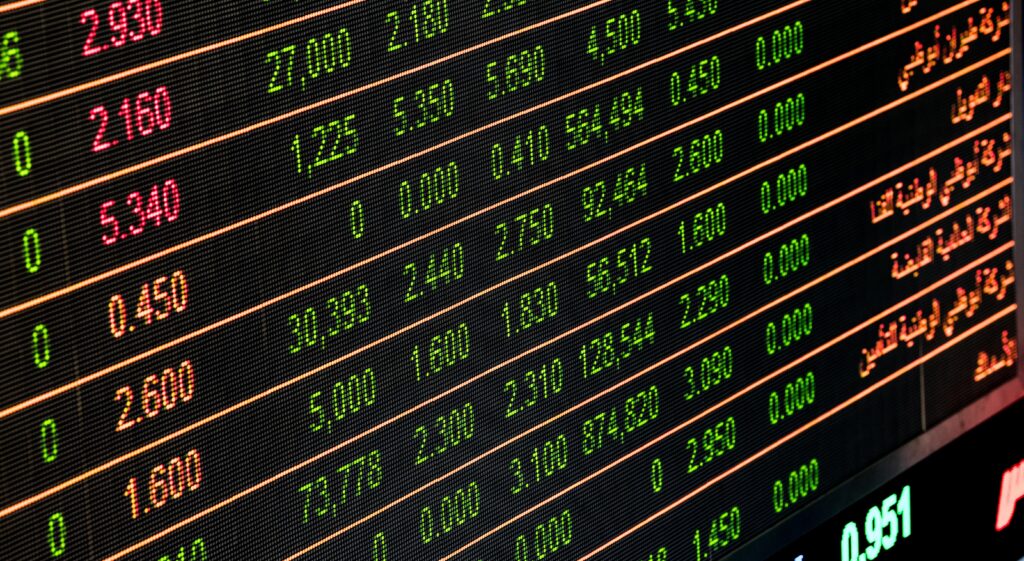Candlestick Patterns and their Significance
Understanding the Basics of Candlestick Patterns in the Crypto Market
Candlestick patterns serve as powerful tools for understanding the dynamics of the crypto market. By comprehending these patterns, traders gain insights into bullish or bearish sentiments and can make more informed decisions. Here is an overview of the basics of candlestick patterns in the crypto market.
At a fundamental level, a candlestick represents the price movement of an asset within a specific timeframe, be it hours, days, or months. Each candlestick consists of four main parts: the open, close, high, and low.
Firstly, the body of the candlestick portrays the opening and closing prices during the designated time period. If the closing price is higher than the opening price, the body is typically colored green or white to indicate a bullish pattern. Conversely, if the closing price is lower than the opening price, the body is usually red or black to signify a bearish pattern.
The upper shadow (also known as wick or upper wick) extends above the body and illustrates the highest price reached during that timeframe. On the other hand, the lower shadow (or lower wick) represents the lowest price achieved. Analyzing these shadows helps discern market sentiment.
Different candlestick patterns convey distinct insights into market trends. The simplest pattern, known as a doji candlestick, occurs when the open and close prices are very similar. This shape indicates market indecision and equivocal supply-demand dynamics.
Additional notable patterns include engulfing candles where one candle “engulfs” or overtakes the previous one, signaling potential reversals; hammers displaying long shadows with small bodies, indicating selling pressure losing momentum; shooting stars embodying an inverted hammer-like structure pointing towards possible downturns in bullish trends; and spinning tops characterized by small bodies and long shadows that imply uncertainty.
To appropriately interpret these patterns, traders often refer to other technical analysis tools like volume indicators or moving averages for confirmation. Volume analysis helps assess market strength or weakness, while moving averages enable traders to track price trends and potential directional shifts.
In conclusion, understanding candlestick patterns is crucial in the analysis of the crypto market. These formations provide insights into bullish or bearish sentiments, occurrences of indecision, and potential trend reversals. By incorporating candlestick patterns into their trading strategies, traders have a better chance of making sound decisions based on market dynamics and increasing their chances for profitability.
The Significance of Bullish and Bearish Candlestick Patterns for Crypto Investors

The significance of bullish and bearish candlestick patterns cannot be overlooked when it comes to analyzing the crypto market for investors. These patterns provide valuable insights into market sentiment and potential price movements, helping investors make informed decisions about buying or selling cryptocurrencies.
Bullish candlestick patterns indicate periods of optimism and upward momentum in the market. During bullish trends, these patterns serve as confirmation of a potential continuation of an uptrend. Common bullish candlestick patterns include the hammer, engulfing pattern, morning star, and ascending triangle.
The hammer is characterized by a small body near the top of the candle’s range with a long lower wick. It suggests that sellers were overpowered by buyers, hinting at a potential reversal or continuation of an uptrend.
The engulfing pattern occurs when a smaller bearish candlestick is followed by a larger bullish candlestick that engulfs it completely. This signals a shift in control from sellers to buyers, indicating a potential trend reversal.
Morning star formation involves three consecutive candles, starting with a bearish candle, followed by a small-bodied candle (doji or spinning top), and finally a strong bullish candle. This pattern signifies bullish reversal momentum and gives investors insight into a market shift towards an upward trend.
In ascending triangles, there is a rising lower trendline and a flat upper line. This pattern typically suggests accumulation and indicates that the cryptocurrency may break out further upwards.
On the other side of the spectrum, bearish candlestick patterns signify pessimism and downward pressure in the market. They indicate a potential reversal or continuation of a downtrend. Various bearish patterns include shooting star, hanging man, bearish engulfing, and the descending triangle.
A shooting star has a small body located near the bottom of the range with a long upper wick. It suggests an exhaustion point where sellers outweigh buyers and might anticipate price reversals before continuing downward.
A hanging man bears resemblance to the shooting star, but it occurs during an uptrend and signifies potential trend reversals. The small body is positioned near the top of the range, portraying bearish pressure that may lead to a downward move.
Bearish engulfing takes place when a smaller bullish candlestick is immediately followed by a larger bearish candlestick that engulfs it completely. A bearish reversal signification arises as sellers overcome buyers during this pattern.
Descending triangles exhibit a declining upper trendline and a flat lower one. The pattern represents distribution tendencies, hinting towards potential further downward breakout.
By observing these candlestick patterns, investors can effectively gauge market sentiment and identify potential entry or exit points in cryptocurrencies. Combining these patterns with other technical analysis tools enhances the predictability of market trends, enabling crypto investors to make sound investment decisions.
Remember, thorough examination of overall market conditions and utilizing additional indicators is crucial for successful trading within the unpredictable world of cryptocurrencies.
Candlestick Patterns: Decoding Market Sentiments in Cryptocurrency Trading
Candlestick patterns are popular analytical tools in cryptocurrency trading that help traders better understand market sentiments and predict future price movements. These patterns are formed by the combination of multiple candlesticks, each representing a specific time period and conveying valuable information about the asset being traded.
There are various types of candlestick patterns, each with its own distinct characteristics and implications. The most common ones include:
- Bullish Engulfing: This pattern occurs when a small bearish candle is followed by a large bullish candle that engulfs the previous one. It often indicates a potential trend reversal from a bearish to a bullish sentiment.
- Bearish Engulfing: The exact opposite of the bullish engulfing pattern, it happens when a small bullish candle is overshadowed by a larger bearish candle. Traders interpret this as a possible shift from a bullish to a bearish market sentiment.
- Doji: A doji candlestick has equal or almost equal opening and closing prices and consolidates within a small range. This pattern typically represents market indecision, suggesting uncertainty and potential trend reversals.
- Hammer: Often seen at the bottom of downtrends, a hammer candle has a small body and a long lower wick (shadow). It is viewed as a bullish indication, signaling that bears could be losing control and prices may recover.
- Shooting Star: Similar to the hammer but occurring at the top of uptrends, the shooting star boasts a long upper shadow, indicating potential bearishness going forward.
- Morning Star: Consisting of three candles, with the middle one being smaller and positioned lower than the other two, the morning star displays potential bullish signals as it suggests an upcoming trend reversal from bearishness to bullishness.
- Evening Star: The opposite of the morning star, this pattern signifies market sentiment shifting from bullish to bearish. It consists of three candles like its counterpart but with the middle one smaller and positioned higher.
Traders use these candlestick patterns, among others, along with additional technical analysis tools and indicators to make informed decisions in cryptocurrency trading. By interpreting the sentiment indications provided by each pattern, traders can anticipate potential market movements and devise effective trading strategies accordingly.
How to Trade Crypto Using Doji Candlestick Patterns for Better Decision Making

Cryptocurrencies have gained immense popularity in recent years, attracting a diverse range of investors and traders. Understanding how to analyze price movements and make informed decisions is crucial in the volatile crypto market.
One widely used technical analysis tool is candlestick patterns, which provide valuable insights into price trends. Among these patterns, the Doji candlestick pattern holds particular relevance for crypto traders. The Doji pattern depicts a situation in which an asset’s opening and closing prices are nearly identical or often converge.
Trading crypto using Doji candlestick patterns can improve decision-making by helping traders identify potential reversals, trends, and market indecision. By correctly interpreting the meaning behind Doji candles, traders can make more strategic and profitable moves.
There are several types of Doji candlestick patterns that traders should understand:
- Long-legged Doji: This candle has long upper and lower shadows, suggesting high levels of indecision in the market. It denotes equilibrium between buyers and sellers, signaling a potential reversal or trend continuation.
- Dragonfly Doji: The Dragonfly Doji has a long lower shadow with little to no body visible. It suggests a bearish trend may be ending or reversing, indicating a possible buy signal.
- Gravestone Doji: Conversely, the Gravestone Doji features a long upper shadow with little to no body visible. It appears during an uptrend and indicates that the trend might reverse soon. Traders often interpret it as a potential sell signal.
- Four-Price Doji: This rare candlestick occurs when the open, close, high, and low prices are almost equal. It implies extreme market indecision or consolidation and might indicate that a break-out or reversal is imminent.
To effectively trade using Doji candlestick patterns, traders need to consider other factors alongside these patterns. Paying attention to volume levels, trendlines, support and resistance levels, as well as other technical indicators, can complement the analysis and decision-making process. Combining these tools allows traders to better assess the probability of a certain price movement.
Remember, candlestick patterns form only a part of technical analysis. They provide insights into potential future price action but should not be considered as stand-alone indicators. A careful balance between multiple analysis techniques is key to successful trading in the crypto market.
As with any market, strict money management rules and risk assessment are crucial. Documenting trades, staying updated with crypto news, and keeping emotions in check optimize sound decision-making and enhance overall trading performance.
By understanding and effectively utilizing the various Doji candlestick patterns, crypto traders can significantly improve their ability to make informed decisions and ultimately navigate the exciting yet volatile crypto market with more confidence.
The Role of Hammer Candlesticks in Identifying Potential Reversals in Crypto Markets

The Role of Hammer Candlesticks in Identifying Potential Reversals in Crypto Markets
When it comes to technical analysis in the crypto market, candlestick patterns play a crucial role in recognizing potential reversals and forecasting price movements. One prominent candlestick pattern that traders often rely on is the hammer, also known as a hammer candlestick.
A hammer candlestick is a single candlestick pattern with a small body and a long lower shadow. To identify a hammer, you need to spot a candlestick with a small real body located at the upper end of the trading range with a long lower shadow extending towards the bottom. This formation essentially looks like a hammer ready to strike.
The significance of hammer candlesticks lies in their ability to indicate potential trend changes or price reversals. A hammer implies that selling pressure pushed the price down during the session, but momentum shifted, leading to a recovery and closing near or above the opening price. This change in momentum can signal that buyers are stepping in and potentially outweighing sellers.
Due to its shape, the hammer suggests that bullish sentiment is prevailing in the market. Its small real body represents consolidation and indecision regarding price direction. The long lower shadow forming below the body indicates that bears attempted to push prices lower, but buyers were able to reject these attempts and bring the price back up.
In crypto markets specifically, where volatile swings are common, hammer candlesticks can be especially useful for identifying potential market reversals. Traders often interpret this pattern as an early sign of an upward movement following a downtrend or as an indication of support levels being reached.
However, it’s important not to solely rely on the presence of a hammer candlestick for confirming reversals. Ideally, traders should consider other factors such as volume, overall trend analysis, and confirmation from other technical indicators before making any trading decisions based on candlestick patterns alone.
To sum up, hammer candlesticks play an essential role in identifying possible trend reversals in crypto markets. They suggest that buyers have gained strength and could potentially overpower sellers, leading to a potential price increase. However, it is vital to consider other supporting factors to increase the probability of accurate predictions.
Engulfing Candlestick Patterns and Their Predictive Value for Crypto Traders

Engulfing candlestick patterns are widely used by technical analysts in the world of cryptocurrency trading. These visual patterns on candlestick charts can provide valuable insights and predictions regarding future price movements. To understand the predictive value of engulfing candlestick patterns, it is crucial to comprehend their formation and different types.
An engulfing pattern materializes when a smaller candle is completely engulfed by the larger one that follows directly. This specific formation symbolizes a significant shift in market sentiment. There are two variations of engulfing patterns: bullish and bearish engulfs.
Bullish Engulfing Pattern:
A bullish engulfing candle occurs when a relatively small bearish candle is entirely covered by a subsequent larger bullish one. This formation suggests that market sentiment has shifted from bearish to bullish in the given timeframe. Consequently, this pattern often indicates a potential upward price reversal or trend continuation.
The presence of a bullish engulfing pattern could be viewed as a buy signal for many crypto traders since it shows the potential for an upcoming price appreciation. However, it is important to consider other factors such as volume, market conditions, and confirmation from additional technical indicators before making trading decisions based solely on this pattern.
Bearish Engulfing Pattern:
On the other hand, a bearish engulfing pattern occurs when a small bullish candle is subsequently engulfed by a larger bearish one. This formation implies a shift from bullish sentiment to bearish within the specified timeframe. It usually indicates that selling pressure has increased and could potentially lead to a downward trend or reversal.
Crypto traders may interpret the presence of a bearish engulfing pattern as a sell signal, considering that it suggests an imminent price decline. However, it is crucial to analyze other aspects alongside this pattern, including volume, support/resistance levels, and other relevant technical indicators before executing trades based solely on this formation.
Predictive Value for Crypto Traders:
Engulfing candlestick patterns hold valuable predictive significance in the ever-fluctuating crypto market. They can assist traders in identifying potential trend reversals or continuations, marking entry/exit points, and managing risk more effectively.
Nevertheless, it is important to remember that engulfing patterns should not be relied upon as standalone indicators. To enhance the accuracy and reliability of predictions, it is advisable to complement engulfing patterns with other technical analysis tools such as trendlines, moving averages, oscillators, and support/resistance levels.
Trading decisions should always consider multiple factors and indicators for a comprehensive analysis. Engulfing patterns can serve as a valuable component of a trader’s strategy but should be used in conjunction with other analyses and risk management measures aimed at reducing potential losses and maximizing profitability.
Morning Star vs. Evening Star: What These Candlestick Patterns Spell for Cryptocurrencies
Morning Star and Evening Star are two candlestick patterns that can provide insights into the future direction of cryptocurrencies. These patterns are widely used by traders and technical analysts to make informed decisions. Let’s delve deeper into what these patterns spell for cryptocurrencies.
The Morning Star is a bullish reversal pattern consisting of three candles. The first candle is a long red (or bearish) candle that clearly indicates a downtrend. The second candle is shorter in length and demonstrates indecision in the market. This candle can be either bullish or bearish, but it typically has a smaller body. Finally, the third candle is a long green (or bullish) candle, signaling a bullish reversal. It signifies that buyers have gained control and are pushing the price higher.
When spotting a Morning Star pattern in the crypto market, it suggests that a trend reversal from bearish to bullish is imminent. However, using this pattern alone may not be sufficient. Traders often look for confirmation from other indicators or trends to strengthen their conviction before initiating any trade.
On the flip side, we have the Evening Star pattern, which is a bearish reversal pattern. It also consists of three candles, but this time, it indicates a potential shift from bullish to bearish. The first candle in an Evening Star formation is usually a long green (or bullish) candle that confirms an ongoing uptrend. The second candle represents uncertainty and can be either bullish or bearish with a small body. Finally, the third candle brings the confirmation of a reversal; it is a long red (or bearish) candle indicating that selling pressure has overcome buying pressure.
Spotting an Evening Star formation in the crypto market suggests that it might be a good time to exit long positions or even consider short selling if there are further technical or fundamental signals aligning with this pattern.
It should be noted that these patterns often occur during periods of price consolidation or when significant events impact the market sentiment. Traders use candlestick patterns like Morning Star and Evening Star as part of their broader analysis to gain an edge in predicting future price movements. Their effectiveness can vary across different cryptocurrencies and market conditions, hence it is imperative to consider additional tools, indicators, and information before making any trading decisions.
By identifying Morning Star or Evening Star patterns in the crypto market, traders can potentially benefit by recognizing potential trend reversals and planning their trades accordingly.
Utilizing the Harami Candlestick Pattern to Enhance Your Crypto Trading Strategy

Utilizing the Harami candlestick pattern can be a valuable tool to enhance your crypto trading strategy. This classic chart pattern helps traders identify potential trend reversals and ascertain favorable trade opportunities. Comprehending the Harami pattern and its significance can provide insights into market sentiment, giving traders an edge in making informed decisions.
The Harami pattern consists of two candles, with the first candle being larger and the second one smaller in size. These candles have different colored bodies, indicating an alteration in buyer and seller dominance. The first candle’s size, relative to previous candles, signifies its importance.
When analyzing the Harami pattern, it is crucial to understand its variations. A bullish harami occurs when the first candle showcases a downtrend (bearish) but is followed by a smaller candle (bullish) within its range. This indicates a potential trend reversal from bearish to bullish. On the contrary, a bearish harami transpires when the first candle reflects an ascending trend (bullish), only to be followed by a smaller candle (bearish) inside its range. This suggests a possible reversal from bullish to bearish.
Traders typically work with additional validation tools or indicators while utilizing the Harami pattern. Analyzing the prevailing market conditions, considering price action around support and resistance levels, and implementing other technical indicators can help confirm the validity of the Harami pattern before initiating a trade.
Moreover, traders often pair the Harami pattern with other complementary strategies for enhanced effectiveness. Such combinations may include assessing key support or resistance levels alongside trendlines, moving averages, or utilizing momentum indicators such as MACD (Moving Average Convergence Divergence) or RSI (Relative Strength Index).
Recognizing the appearance of a Harami candlestick pattern on cryptocurrency price charts provides traders with valuable information for potential trading opportunities. Traders may implement this insight to identify potential entry or exit points for their trades, allowing them to capitalize on sudden price shifts and maximize profits.
While the Harami pattern can offer insights into market sentiment, good risk management is essential. It is vital to set stop-loss orders and establish clear profit targets to ensure a disciplined approach to trading. Careful consideration of market conditions, risk tolerance, and trade strategies remains integral to create a comprehensive crypto trading plan.
In summary, mastering the usage of the Harami candlestick pattern within your crypto trading strategy is beneficial for identifying potential trend reversals and evaluating favorable trading opportunities. Combining the Harami pattern with other indicators can enhance its effectiveness. Successful implementation involves continuously monitoring market conditions, applying risk management techniques, and adhering to strategic planning in order to make well-informed trading decisions.
The Psychology Behind Major Candlestick Patterns in Cryptocurrency Trading
Candlestick patterns play a significant role in understanding the psychology behind cryptocurrency trading. Traders utilize these patterns to identify potential price reversals, confirm trends, and make more informed trading decisions. Let’s delve into the psychology behind some major candlestick patterns commonly observed in crypto markets.
- Doji:
A Doji candlestick occurs when the opening and closing prices are almost equal, resulting in a cross-like or plus sign pattern. This suggests that buyers and sellers are at equilibrium, indicating indecision within the market. It reflects a battle between bears (sellers) and bulls (buyers), often signaling an impending trend change. - Hammer:
The hammer candlestick signifies a potential trend reversal after a downtrend. It displays a small body located at the upper end of the long lower shadow, resembling a hammer. This pattern suggests that buyers stepped in to push prices higher after a period of aggressive selling. It indicates market sentiment shifting from bearish to bullish. - Shooting Star:
Opposite to the hammer, the shooting star occurs after an uptrend and signals a possible trend reversal. The candlestick possesses a wick extending above a small body, representing seller dominance driving prices down despite the initial surge by the bulls. The shooting star indicates that buyers are losing momentum and sellers are gaining control. - Engulfing Pattern:
The engulfing pattern is formed when a candle engulfs the previous candle entirely or its body engulfs the body of the previous candle. A bullish engulfing pattern forms during a downtrend and suggests that buyers have confidence in reversing the trend. Conversely, a bearish engulfing pattern during an uptrend signifies that sellers are gaining control, potentially leading to a shift in market sentiment. - Evening Star:
The evening star pattern consists of three candles: a strong bullish candle followed by a small-bodied or Doji candle – signaling indecision – and finally, a strong bearish candle. It appears at the peak of an uptrend, suggesting a potential reversal. The evening star pattern reflects a transition from bullishness to bearishness, indicating selling pressure mounting amidst a weakening uptrend. - Morning Star:
Conversely, the morning star pattern emerges at the bottom of a downtrend, indicating a potential trend reversal. It also involves three candles: a strong bearish candle followed by a small-bodied or Doji candle, and finally, a strong bullish candle. It suggests that buying pressure is outweighing selling pressure, leading to optimism among traders.
Understanding these major candlestick patterns allows traders to gauge market sentiment and predict potential trend reversals accurately. By recognizing the psychological aspects marked by these patterns, traders can make informed decisions based on evolving buyer-seller dynamics within cryptocurrency markets.
Advanced Candlestick Patterns: Beyond the Basics for Seasoned Crypto Traders

Candlestick patterns are a popular tool used by seasoned crypto traders to analyze market trends and make informed trading decisions. While beginner traders often learn about basic candlestick patterns, there is a whole world of advanced candlestick patterns that can offer additional insights and enhance trading strategies. In this article, we will explore some of these advanced candlestick patterns that go beyond the basics.
- Marubozu
Marubozu candles occur when the opening price is the same as either the highest or lowest price of the day, with no upper or lower shadows. They indicate strong market sentiment and suggest that buyers or sellers completely dominated the trading session. If a bullish marubozu appears, it often indicates strong buying pressure and potential bullish continuation, while a bearish marubozu signals heavy selling pressure and bearish continuation. - Doji
A doji candlestick pattern forms when the opening and closing prices are very close or virtually the same. The hallmark of a doji is that it has almost no body, and the shadow lengths may vary. Dojis signify indecisiveness in the market and suggest a potential reversal or market consolidation. Traders often look for confirmation in the subsequent candles after spotting a doji. - Hammer
Hammers have small bodies located at the top end of a long lower shadow, resembling an inverted hammer. This pattern often signifies a potential trend reversal from bearish to bullish. Hammer candles indicate that buyers are stepping into the market after intense selling pressure, hinting at a possible trend shift. - Shooting Star
Shooting star patterns appear when prices open significantly higher than the previous close but rally during the session, ultimately closing near or below the opening price. They form at resistance levels and indicate potential reversals from bullish to bearish trends. When spotting a shooting star pattern, traders might look for confirmation through subsequent bearish candles. - Engulfing Patterns
Engulfing patterns are two-candlestick patterns that occur when a prior candle’s body fully engulfs the body of the preceding candle. Bullish engulfing patterns form a larger bullish candle after a smaller bearish one, suggesting strength in buying pressure. On the other hand, bearish engulfing patterns emerge when a larger bearish candle follows a smaller bullish one, implying an increase in selling activity and potential trend reversals. Engulfing candles often offer important signals, but traders should look for confirmation before acting on them. - Tweezer Tops and Bottoms
Tweezer tops form when two or more candles have almost the same high price, creating resistance levels. This pattern is considered bearish and suggests a possible trend reversal. On the other hand, tweezer bottoms are formed by identical or nearly identical lows, indicating support levels and potential upward price movements.
Remember that advanced candlestick patterns should not be solely relied upon for trading decisions. Often, it is recommended to combine them with other technical indicators and analysis to receive comprehensive trade signals. These advanced patterns can effectively compliment a trader’s repertoire, contribute to their market analysis, and enhance overall trading strategies in the exciting world of cryptocurrencies.
The Significance of Shooting Star and Inverted Hammer Patterns in Crypto Charts

The shooting star and inverted hammer patterns are significant candlestick formations on cryptocurrency charts. These patterns can provide insights to traders about potential shifts in price trends and help them make informed trading decisions.
The shooting star pattern is characterized by a small body and a long upper wick, with little to no lower wick. This formation appears at the end of an uptrend and suggests a possible trend reversal. It indicates that buyers pushed the price higher during the session but lost control, allowing sellers to push the price back down. This overall rejection of higher prices can be seen as a bearish signal by traders.
On the other hand, the inverted hammer pattern has a small body with a long lower wick, and little to no upper wick. This formation typically occurs at the bottom of a downtrend, suggesting a potential trend reversal to the upside. It indicates that buyers were able to push the price higher during the session, overpowering sellers temporarily. Traders interpret this as a bullish sign as it demonstrates that buying pressure is building up.
Both patterns are powerful signals when combined with other technical indicators or chart patterns, as they suggest potential reversals in market sentiment. However, it is essential to consider other factors such as volume, support/resistance levels, and overall market conditions before making any trading decisions solely based on these patterns.
In conclusion, understanding the significance of shooting star and inverted hammer patterns on crypto charts can greatly benefit traders seeking insights into possible trend reversals. These formations have the potential to provide valuable information when used in conjunction with other tools and should be considered within the broader context of market analysis.
Combining Multiple Candlestick Patterns for Increased Accuracy in Crypto Forecasting
Combining Multiple Candlestick Patterns for Increased Accuracy in Crypto Forecasting
When it comes to increasing accuracy in predicting crypto market trends, analyzing candlestick patterns plays a crucial role. However, relying on a single pattern might not provide the most accurate insights. That’s where combining multiple candlestick patterns can offer a more comprehensive and effective approach in crypto forecasting.
By assessing multiple candlestick patterns together, traders and analysts have the opportunity to gain deeper insights into market dynamics and price movements. This methodology involves examining consecutive and overlapping candlestick formations to identify patterns that occur across the charts.
One commonly used technique is to look for confirmation between different patterns. For instance, if a bullish reversal pattern like a hammer or bullish engulfing occurs concurrently with a trendline break, it may strengthen the signal for an upward trend continuation. The alignment of multiple patterns increases the likelihood of an accurate prediction by corroborating each other’s indications.
Additionally, combining candlestick pattern analysis with other technical indicators can enhance forecasting accuracy even further. Traders may utilize indicators such as moving averages, relative strength index (RSI), or volume analysis in conjunction with candlesticks to validate or strengthen their predictions.
Multiple candlestick patterns can also provide valuable information about trend reversals and trend continuation situations. By observing potential combination scenarios like the confirmation of bearish reversal patterns along with specific trendline breakages, traders can anticipate a possible trend reversal effectively.
It’s crucial to bear in mind that interpreting multiple candlestick patterns requires experience and expertise. Patience and thorough analysis are necessary since false signals can still occur, even when combinations seem favorable. Successful use of this strategy is based on continuously refining observation skills through practice with live market data.
Moreover, it is essential to keep track of timeframes while employing this technique. Different timeframes might reveal diverging or conflicting patterns, so examining multiple timeframes ensures a broader perspective on price movements and confirms the accuracy of identified combined patterns.
In conclusion, combining multiple candlestick patterns can significantly enhance the accuracy of crypto forecasting. By utilizing a holistic approach that encompasses confirmation between different patterns and integration with technical indicators, traders and analysts have a better chance of making informed decisions. Engaging in continuous learning and practice will further sharpen skills in identifying and interpreting combined candlestick patterns, thereby increasing forecasting accuracy in the unpredictable crypto market.
Identifying Bullish and Bearish Trends through Three-Line Strike Patterns in Cryptos
Identifying bullish and bearish trends through three-line strike patterns in cryptos can provide valuable insights for crypto market enthusiasts. The three-line strike is a candlestick pattern that indicates a potential trend reversal in price action. Understanding how to recognize this pattern can help traders make informed decisions regarding their investments.
A bullish trend signifies an upward movement in the market, while a bearish trend indicates a downward trajectory. The three-line strike pattern is typically observed after an extended rally or decline in prices.
In the case of a bullish trend, one should look for consecutive bullish candlesticks, where each closing price is higher than the previous one. Once there are three continuous bullish candles, the fourth candle opens lower than the third candle’s opening price and closes below the first candle’s closing price. This bearish candle extinguishes the preceding upward momentum, hinting at a possible reversal towards a bearish trend.
Similarly, when analysing for bearish trends, traders need to look for a series of bearish candlesticks leading up to the pattern formation. After three such consecutive candles, the fourth candle should open higher than the third one but fail to close above the first candle’s closing price. This breach of resistance suggests that the bulls are losing power, opening doors to a potential bullish-to-bearish shift.
When identifying these patterns, it is crucial to evaluate other indicators such as volume, volatility, and support/resistance levels for confirmation and reliability. Traders prefer high trading volumes accompanying these patterns as it increases their significance in predicting future price movements.
By closely observing three-line strike patterns on crypto charts and confirming them with other analytical tools, market participants can improve their abilities to anticipate bullish or bearish trends accurately. This knowledge can be useful for making profitable investment decisions or planning timely entries and exits within the crypto market.
Note: Successful trading in the crypto market depends on various factors and requires deep analysis beyond individual patterns like three-line strikes. Always conduct thorough research and consider employing risk management techniques to enhance the probability of success in this volatile marketplace.
Harnessing the Predictive Power of Gap Candlestick Patterns in the Crypto Realm
The world of cryptocurrency trading is vibrant and dynamic, constantly presenting new opportunities for investors. One essential tool that traders utilize to analyze market trends and make informed decisions are candlestick patterns. Among these patterns, one approach that has gained prominence in the crypto realm is harnessing the predictive power of gap candlestick patterns.
A gap refers to a break or space on a chart where no trading activity occurs between two periods. Gap candlestick patterns provide valuable insights into market sentiment and potential shifts in price movement. A gap can take various forms, such as the common gap, breakaway gap, runaway gap, or exhaustion gap. Each formation carries distinct implications for traders.
Some traders consider bullish or bearish gaps as potential indicators of price continuations or reversals. For instance, a bullish gap occurs when the opening price of a candlestick significantly exceeds the closing price of the preceding candlestick. This pattern often signals positive market sentiment and potentially further price increases.
Similarly, bearish gaps occur when the opening price of a candlestick significantly falls below the closing price of the previous session. Traders regard this pattern as a possible indication of negative sentiment and potential downward price movement.
Analyzing the size and occurrence of gaps allows traders to assess market momentum and predict possible market movements. Referred to as measuring gaps, they act as measurement tools to determine the strength of an ongoing trend or provide insights into trend reversals. Larger gaps may signify bolstered confidence among investors and suggest a stronger momentum in the direction signaled by the gap.
Moreover, monitoring multiple consecutive gaps assists traders in identifying possible continuation patterns in strong trends. When witnessing sequences of consecutive gaps going in the same direction, traders posit that the trend will likely persist for some time.
However, it’s vital to recognize that gap candlestick patterns alone should not serve as sole indicators for making investment decisions. To increase reliability, traders often incorporate additional technical analysis tools such as trend lines, moving averages, or oscillators. By combining various analytical techniques, traders create a more comprehensive depiction of market conditions and enhance the accuracy of their predictions.
It’s important to note that gap candlestick patterns are not infallible, and their predictive power may at times result in false signals. Crypto markets inherently involve volatility and risk, making it crucial for traders to exercise caution and consider multiple factors beyond just candlestick patterns.
In conclusion, gap candlestick patterns provide valuable insights into potential market movements and sentiment in the crypto realm. By analyzing the size, occurrence, and sequence of gaps alongside other technical analysis tools, traders can gain a clearer understanding of trends, reversals, or continuations. However, traders must combine this pattern with comprehensive research and multiple indicators to form a robust trading strategy in the ever-evolving world of cryptocurrencies.

